Notes
Haute-Couture Heroes (or: Sandy’s in Vogue!)
(click for full sizes)
Now that the Congressional tussle over the Hurricane Sandy relief fund has subsided, the nation can return to the important work of capitalizing on the disaster. Under the guise of “Celebrating Hurricane Sandy’s First Responders,” Vogue juxtaposed “the city’s bravest and brightest” with “the best of the New York [fashion] collections,” which it dubbed “New York’s other finest.” The sirens aren’t confined to the tops of emergency vehicles in this shoot. Models sporting fire-engine red dresses strut alongside first responders, making the world safe for commerce once again. Although the pooled water in the corner of the frame reminds viewers that effects of Hurricane Sandy linger, the photo shoots turns the muddy street into a runway and the disaster into high concept commercial art.
Vogue’s images illustrate the ways in which traditional gender roles are endemic to heroic commercialism. In the above image, the smiling firefighters both escort and possess the beautiful women who serve as a reward for a job well done. Masculinity is also on display in this shot of the NYPD Special Operations Division, as men stride purposefully and stand resolutely with their hands on their hips.
The models in this photo tower over the police officers but their geometrical outfits position them as props that complement the visual aesthetic of the photograph’s background. They comprise the stage on which the male heroes act. Importantly, the men in these two photographs are also uniformly white.
Just as the police officers and firefighters featured in the photo shoot typify heroic white masculinity, the other images also reinforce race, class, and gender stereotypes. Although the blue-collar workers who staff Con Ed’s East River Generating Station are integral to the city’s safety, this more diverse group is confined to the margins of the photograph. The image stunts their bodies by picturing most from the waist up–clustered and immobile rather than striding purposefully like the first responders. The model, conversely, occupies the position of authority in this photograph, but her steely presence and positioning adjacent to the pipes situates her as little more than a cog in the city’s capitalist machinery.
Another photograph documents the diversity of the Hurricane Sandy’s heroes, but does so in way that again reinforces traditional gender roles.
This group of doctors, nurses, and administrators helped evacuate the neonatal intensive-care unit at Bellevue hospital. One of the models in the photo breaks from her stoic stance to interact with the babies. The babies, conversely, appear strangely prop-like, as they remind the viewer that women, too, can be heroic—but only when babies are involved.
The article informs viewers that although New York’s Coast Guard Station was “flooded out of its Staten Island home base, that hasn’t stopped its crew” from getting their “hands dirty helping people up and down the coast.” In this picture, New York’s fashionistas went along for the ride, decked out in Ralph Lauren, Vera Wang, and Donna Karan rescue gear. Alas, the haute-couture gear is not up to Coast Guard specifications. The hilarious editor’s note that accompanies the shot advises that “Coast Guard policy mandates that all passengers aboard Coast Guard small boats wear the proper-fitting life jacket while the boat is underway. These models were photographed safely at the North Cove marina in Battery Park City, under direct Coast Guard supervision.”
Don’t worry—unlike the citizens who were treated as political footballs in the aftermath of the storm, no models were harmed in the commodification of this disaster.
— Karrin Anderson | @KVAnderson
(photos: Annie Leibovitz for Vogue, February 2013.)
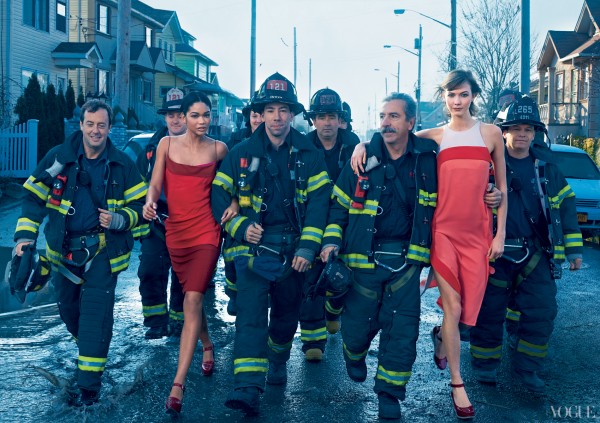
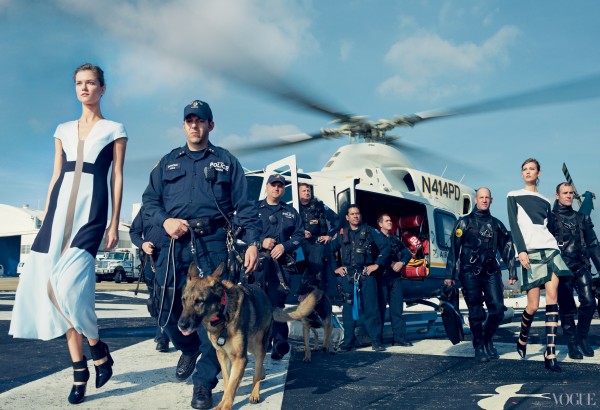
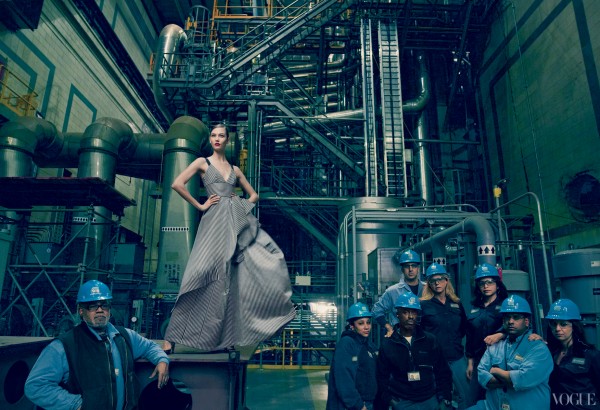
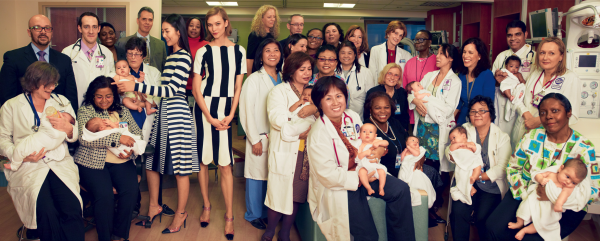

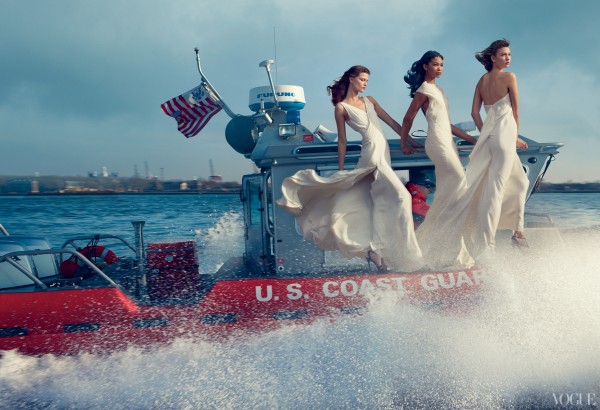
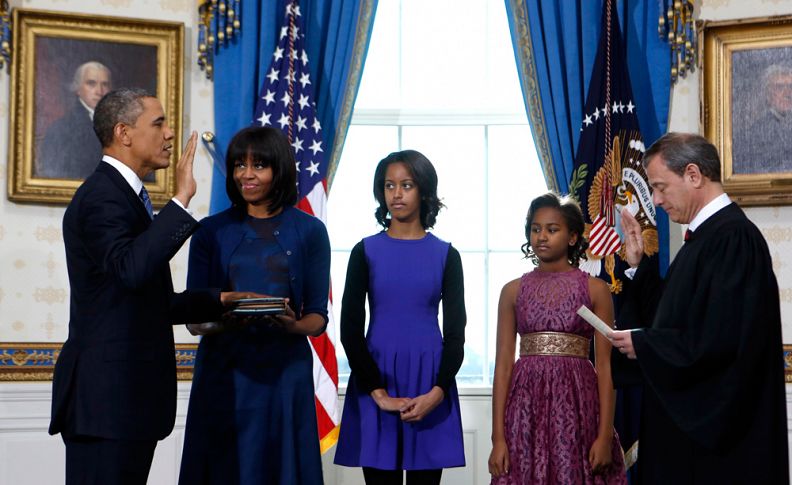
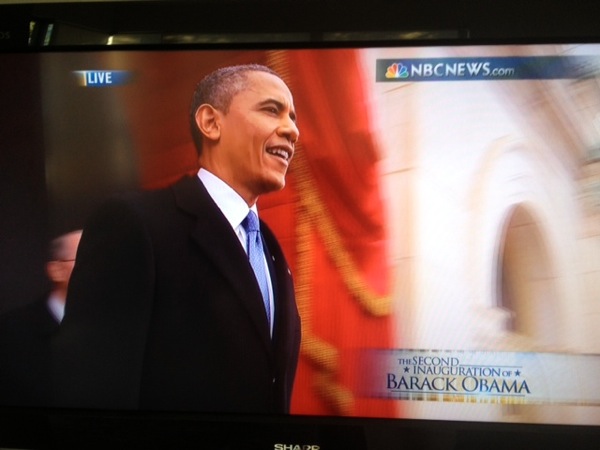
Reactions
Comments Powered by Disqus